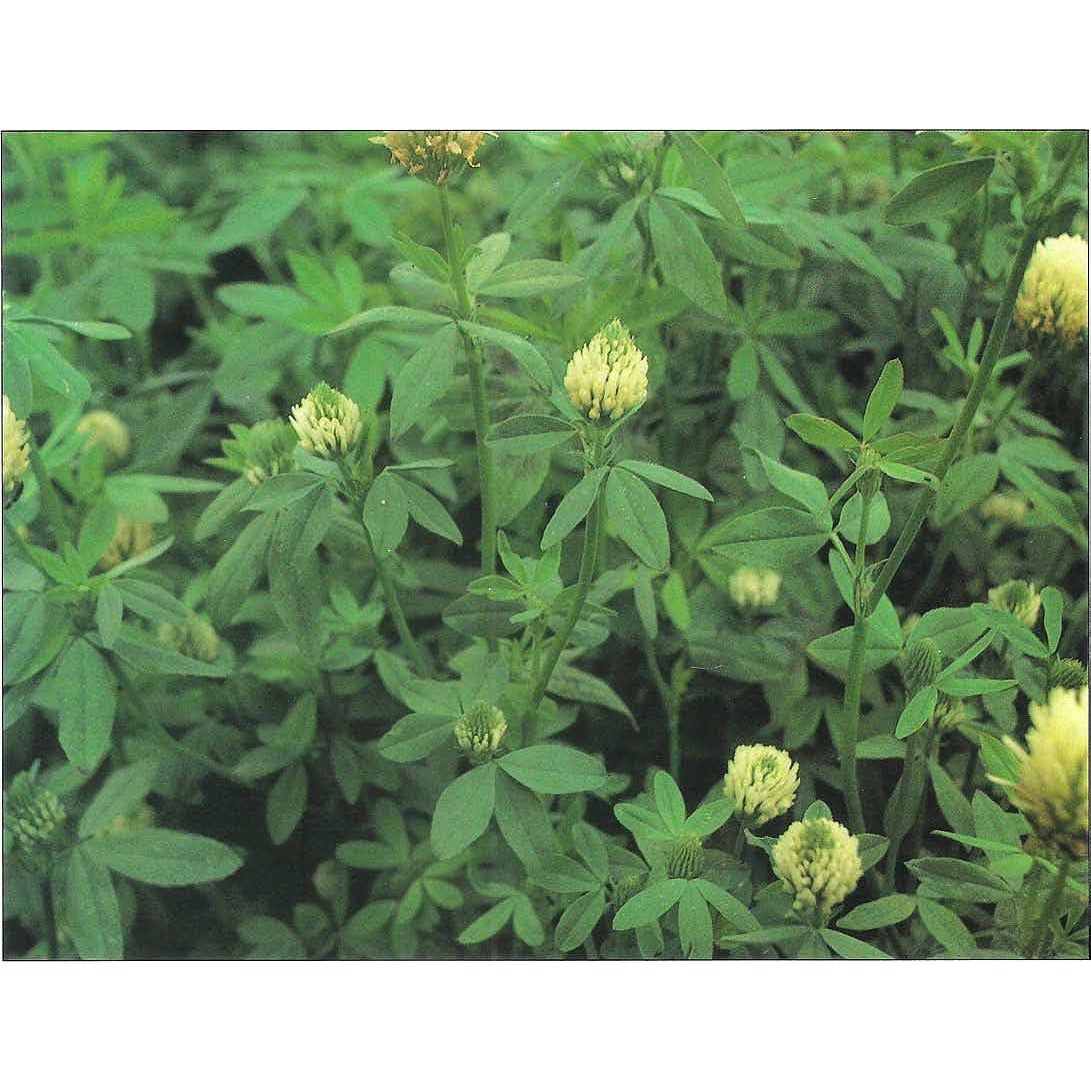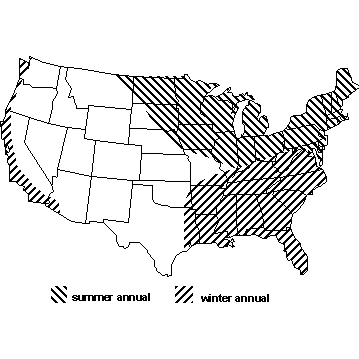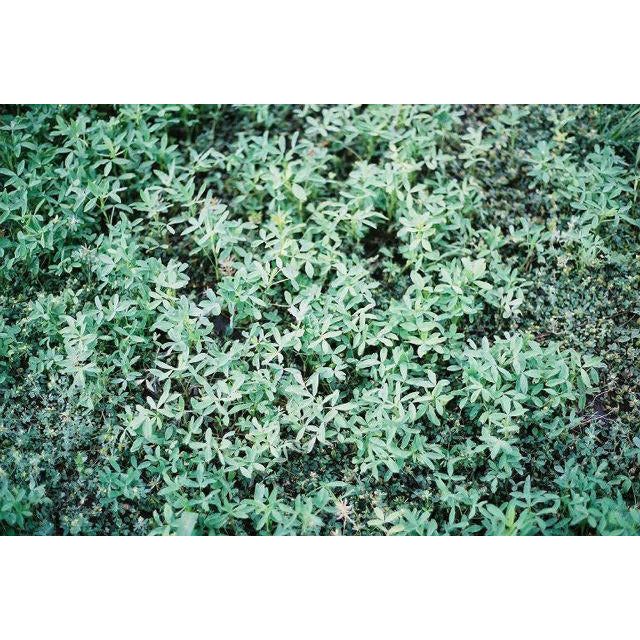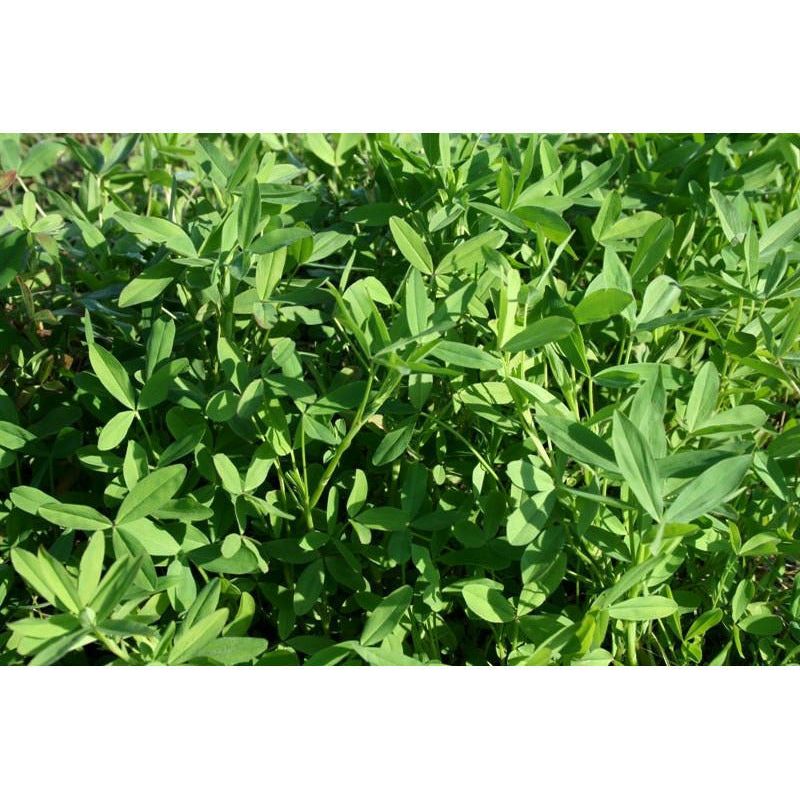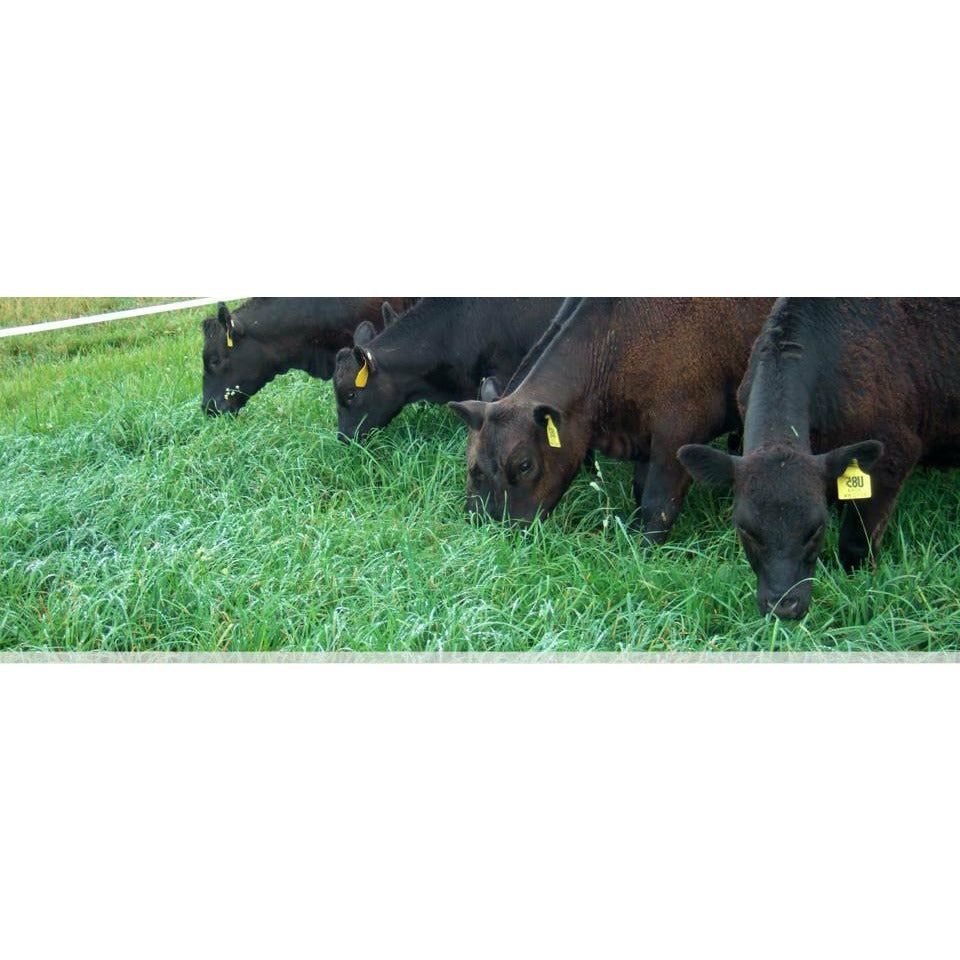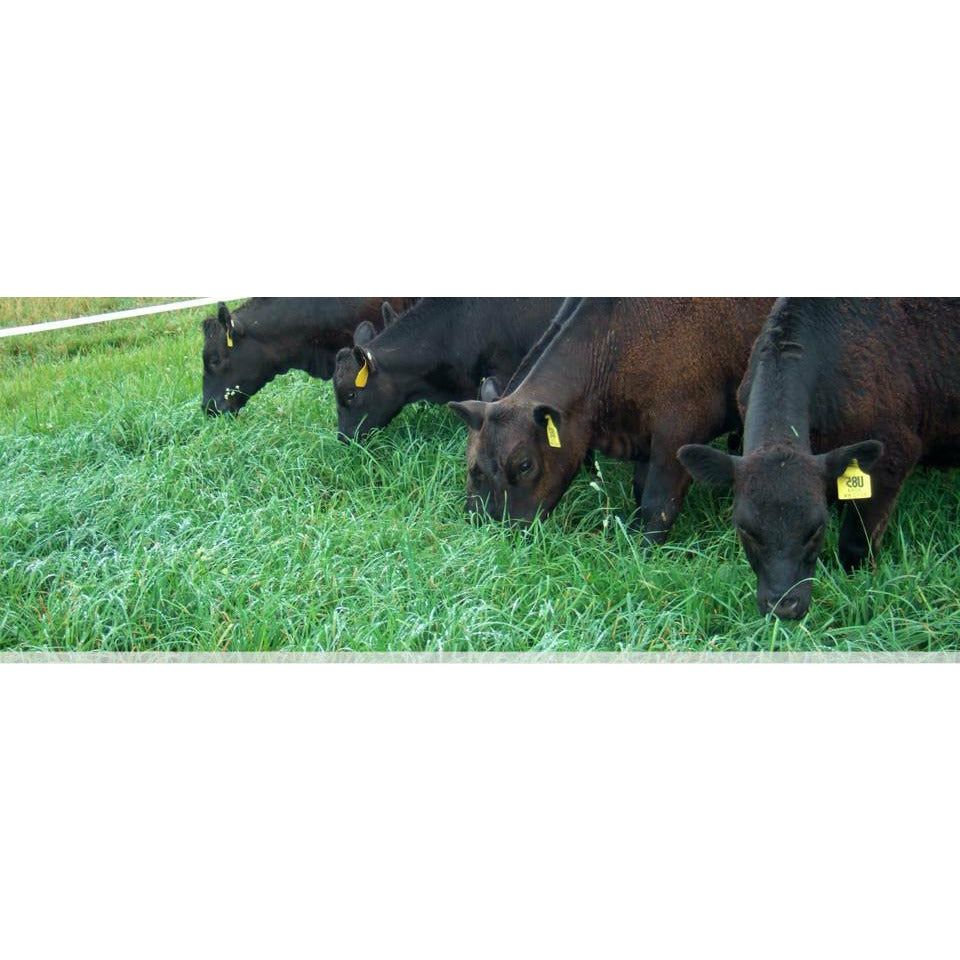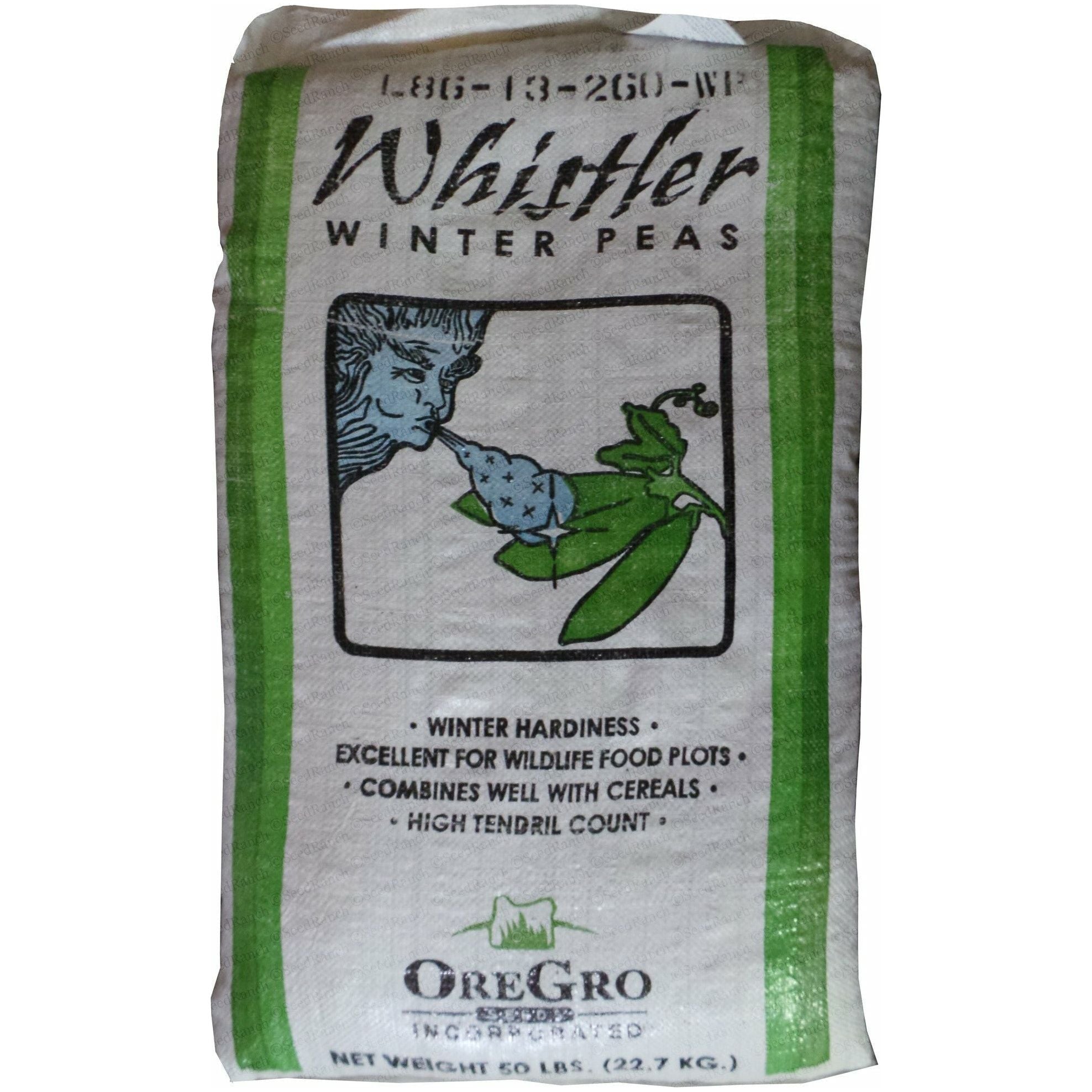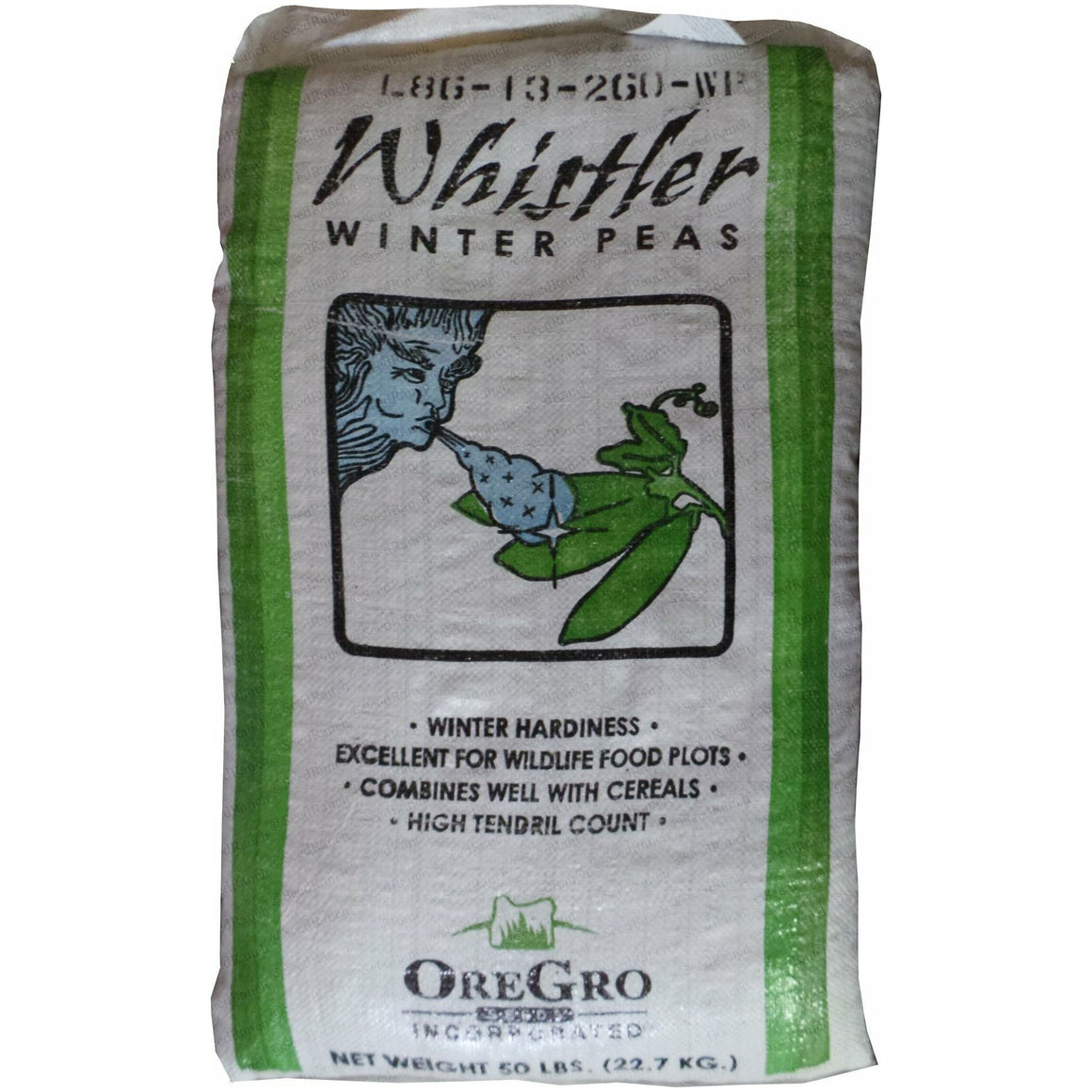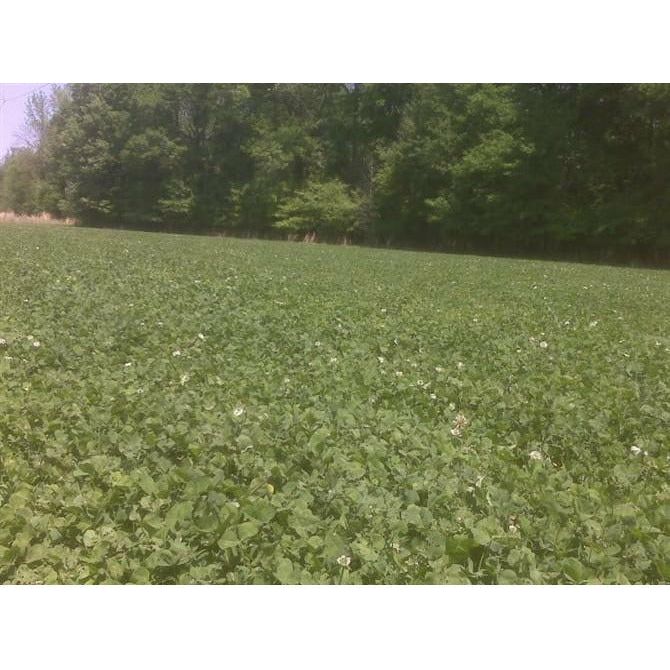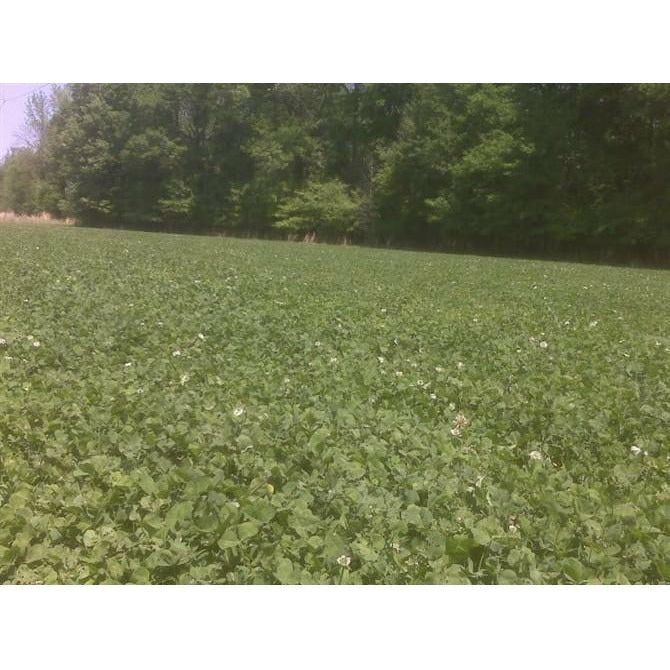Berseem clover - Trifolium alexandrinum L.
- Seeding Rate 20 Lbs Plants 1 Acre.
- Plant No deeper than 1/4 Inch.
Also called: Egyptian clover
Type: summer annual or winter annual legume
Roles: suppress weeds, prevent erosion, green manure, chopped forage, grazing
Mix with: oats, ryegrass, small grains as nurse crops; as nurse crop for alfalfa
A fast-growing summer annual, berseem clover can produce up to 8 tons of forage under irrigation. It's a heavy N producer and the least winter hardy of all true annual clovers. This makes it an ideal winterkilled cover before corn or other nitrogen-demanding crops in Corn Belt rotations. Berseem clover draws down soil N early in its cycle. Once soil reserves are used up, it can fix 100 to 200 lb. N/A or more. It establishes well with an oat nurse crop, making it an excellent cover for small grain>corn>soybean rotations in the Midwest.
Bigbee Berseem clover is relatively new in the United States. It has been an important crop in the Mediterranean, Near East, and India for many years. Because of its importance as a field crop in Egypt, it is commonly called "Egyptian Clover." Until the development of Bigbee berseem, clover in the United States was used only in Florida, Arizona, and California.
Berseem clover is a winter annual legume with oblong leaflets and hollow stems. It grows upright and produces yellowish-white flowers. The plants may grow as tall as 18 to 30 inches. Bigbee is selected for its superior quality, rapid fall growth, and winter hardiness. Because of its winter hardiness, Bigbee has about the same range of adaption as arrowleaf and crimson clovers. Mature Bigbee plants hold their seeds well and produce adequate hard seeds for reseeding stands. This is not true with unselected berseem clover; unselected berseem clovers are nonreseeding.
Berseem clover is similar in drought tolerance to alfalfa (Medicago sativa L.) but can tolerate more soil moisture than alfalfa or sweet clover (Melilotus alba L.). Although berseem clover grows on a variety of soils, a medium, loam soil that is slightly alkaline is best. Production practices are much the same as for other winter annual legumes. If you grow seed for production and/or reseeding, allow the seed to mature in the spring and have the area fallowed with final seedbed preparation in late August. Include Boron when applying fertilizer.
Establishment
You can seed berseem clover from August 25 to October 15. Bigbee is easily established with vigorous seedlings that will result in excellent fall production when planted early. Inoculate seed with the same inoculant used for crimson clover. Take adequate precautions to assure that the inoculant sticks to the seed by using molasses or other sticking agents. The recommended seeding rate is 20 pounds per acre broadcast or 10 pounds per acre drilled. Use 12 pounds per acre of berseem clover seed when planting with cool-season grass mixtures. Cultipack prepared seedbeds to press the seed into the soil surface and to save soil moisture. Establishment has been successful by surface broadcasting the seed on closely clipped grass sods.
Management
Begin grazing or cutting berseem clover when the stand reaches 10 inches in height and when basal shoots begin to grow. Graze or clip to a 3-inch height to encourage new shoot production. It is critical to remove excess growth before temperatures reach the freezing mark. Heavy stand losses can occur from crown rot if excess forage is present during freezing.
For best results, rotate the grazing of berseem clover. This will give better total production by increasing yield and by increasing longevity of stand in the spring.
You can seed berseem clover in a mixture with crimson or white clover. In combination with perennial or annual cool-season grasses or cereals, high-quality forage is produced. It should greatly increase the quality of ryegrass for hay.
Berseem forage contains from 18 to 28 percent crude protein, which is equal to or better than crimson clover and alfalfa. The quality remains acceptable until seed production. No known cases of bloat have been reported in animals feeding on berseem clover. The last growth in the spring may be cut for hay, ploughed under for green manure, or allowed to mature.
The advantage of berseem clover over other clovers and alfalfa is its fast winter-growth rate. Bigbee and "Tibbee" crimson clover produce more fall and winter growth than do the other winter annual clovers. In addition, Bigbee continues to produce forage until late May or early June. Bigbee produces longer into the spring than other winter annual legumes. A limited amount of seed is available to farmers. Seed should become more plentiful as seed production is increased.

